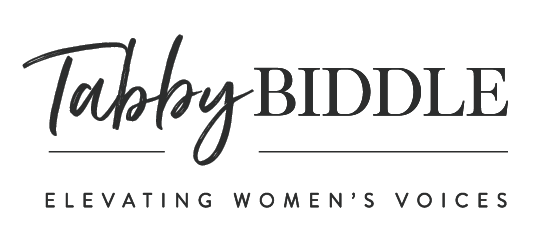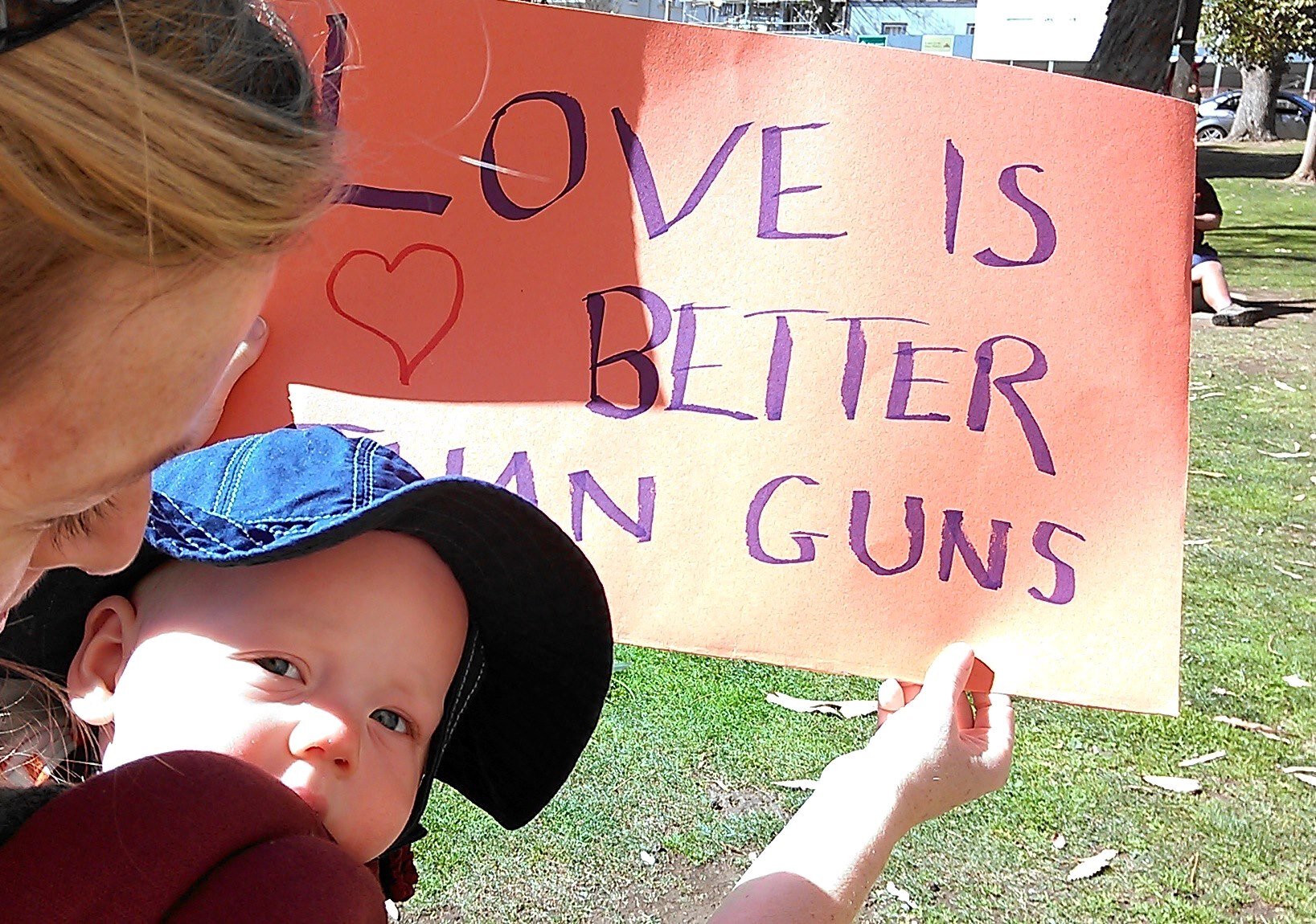No Guns for My Boy
Tabby Biddle
A couple of months ago I was standing in line at a Target in Los Angeles with my husband at my side, wearing my baby boy in his Ergo Carrier on my front. The woman in line behind us smiled at my baby, smiled at me, smiled at my husband, and then said with a chuckle looking at me: Just you wait.
In that moment, I wasn't sure what she was talking about. But then I saw her gesture to what she had on the conveyer belt: Three toy guns. No, not just guns, rifles.
"That's all my boys ever ask for," she said.
I gave her a blank stare, turned to the cashier, paid for my baby's pajamas, and off we went out of the store. Out in the budding spring of Southern California, my husband and I began to unravel that moment. I felt flustered at the thought of moms across America buying their sons toy rifles. "She doesn't have to give in to her sons," my husband said. I agreed. "If her boys later down the road were asking for knives, drugs or alcohol would she be getting those for them too?" I wondered.
I had a memory of a few months earlier when my baby boy was just three months old. We were in a West L.A. Walgreens getting baby wipes for my little guy. Curious about what my son might have to look forward to when he got older, I walked down the aisle just a little further to check out the toys for little boys. What I saw made me so sad. Guns, guns, and more guns.
A month later, the tragedy at Sandy Hook Elementary happened.
I have wondered for a long time how toy guns play into our psyche, and particularly the male psyche. As a preschool and kindergarten teacher in the early 2000s, I watched how 3, 4 and 5 year-old boys got more and more interested in using guns in their dramatic play as they got older. I also noticed how one boy (who was very into guns) influenced an entire group of boys.
The school, a renowned progressive private school in the West Village of Manhattan, decided to have a faculty-wide conversation about how to handle the children's gun play. First off, it's important to know that this school has a rule of no toys at school - so the issue of a child bringing a toy gun to school never came up. However, the school places a heavy value on the importance of dramatic play for a child's development.
So what were we to do?
After much discussion, we decided that any game that made children feel unsafe was not okay. So the rule was set that it was okay to use guns in dramatic play, as long as they were never pointed at other children. While this was doable by some children, it was not by others - especially the boys who were challenged by self-regulation. Cheese sticks, go-gurt packages and turkey sandwiches became guns at lunch. Blocks and clay sculptures became guns during work time. It was a losing battle.
When I look back 10 years to this scenario, I see that we missed out on addressing the issue at its roots. What we should have been discussing was the value of a human life. I understand that as children progress from preschool to kindergarten, there is a growing fascination with "good guys" and "bad guys." Isn't that what we should have been addressing in my school? What makes someone "bad"? What is going on for them inside? How are they feeling? Is there any way we can help them? Why do we feel we need to take violent action against them?
While aggression is part of the human repertoire, I think there is absolutely too much gun violence in our media and video games. Studies have shown us for awhile now that repeated exposure to violence on TV shows and video games de-sensitizes children to violence. Is this the world we want for our kids? Do you really want your kid asking you for a rifle at age 5?
Doesn't it make complete sense that there is so much gun violence in our culture because kids are growing up with guns? We don't need more guns to "protect" ourselves (as some argue). We need more communication about anger, resentment and rage within our families, schools and workplaces - especially for boys and men. We need to make it okay for our boys to express anger, sadness and aggression without a gun in their hand. There is nothing courageous about using a gun.
There are those who posit that just because a child plays with a toy gun he won't become a mass murderer. Understood. My husband, for example, told me that he used to play "army" when he was a kid and this involved toy guns. Today, he is a pacifist and is leading a peacemaking movement.
There are those who argue that taking away toy guns from boys won't curb violent play. I hear you on this. Science shows that boys have larger aggressive centers in their brain than girls, and that teen boys' hormones especially prime them for aggressive and territorial behavior. Dr. Louann Brizendine, the founder of the first clinic in the U.S. to study gender differences in brain, behavior, and hormones, talks about this in her book, The Male Brain.
I have heard it said that a common boy fantasy about killing bad guys and saving the world is just as normal as a common girl fantasy about tucking in animals and putting them to bed. However, wouldn't it be great if saving the world didn't come in the form of killing others, but instead came in the form of helping others live and thrive?
What will I do if and when my little boy asks me for a toy gun?
I will say no, we don't play with guns in our family. We don't believe in playing games that take people's life away, even if it is a pretend game. We believe in the value of a human life.
This blog was first published in The Huffington Post.
Tabby Biddle, M.S. Ed., formerly an early childhood educator, currently leads programs in women's leadership development. She is a mom to a 10-month old boy. Learn more at tabbybiddle.com.

